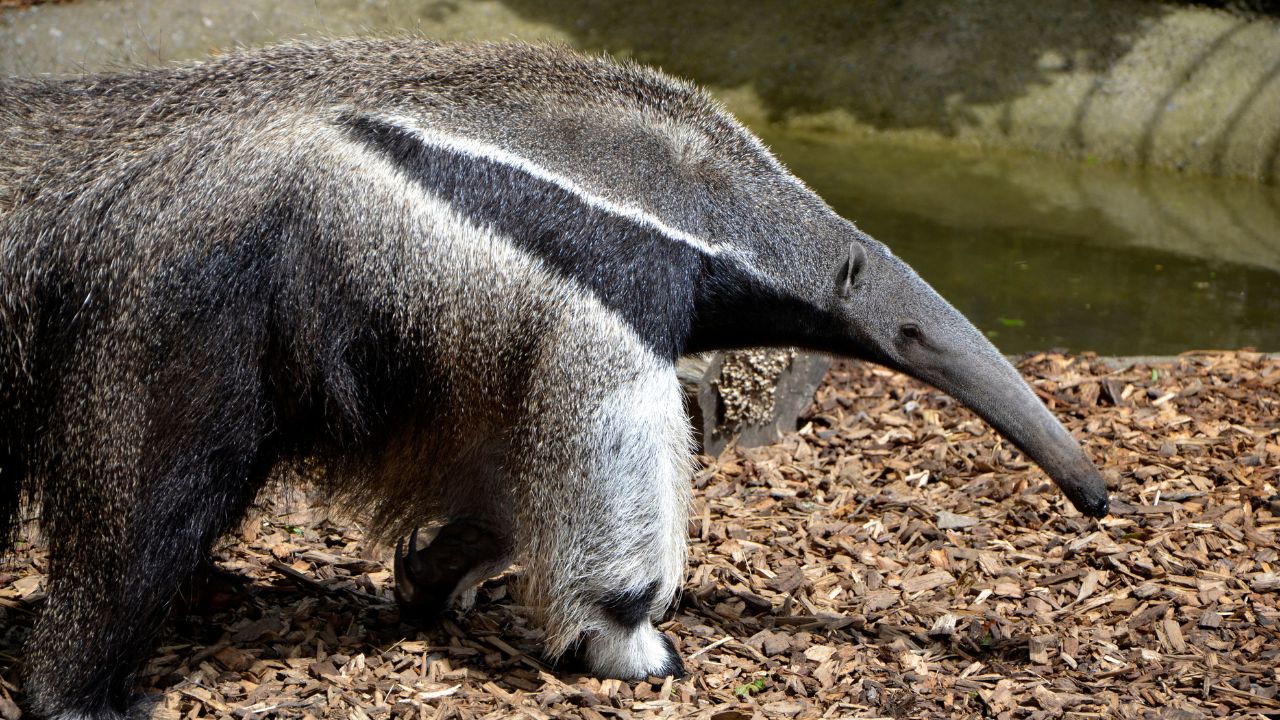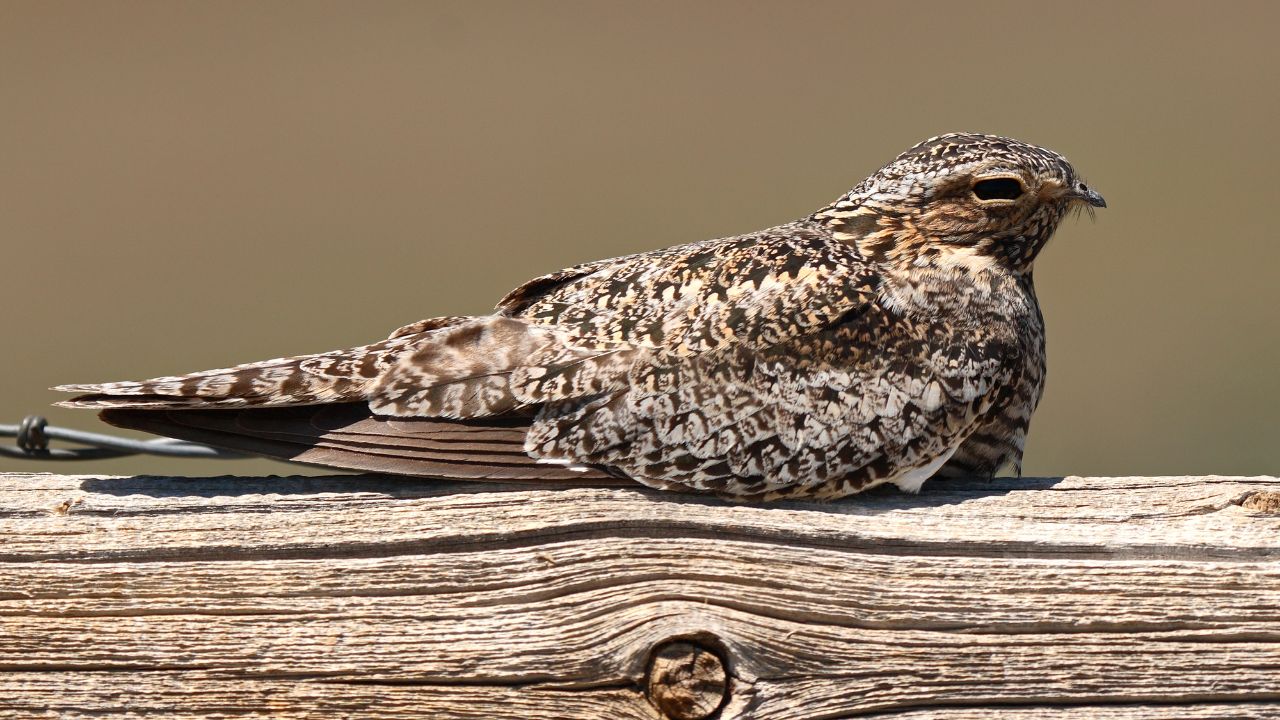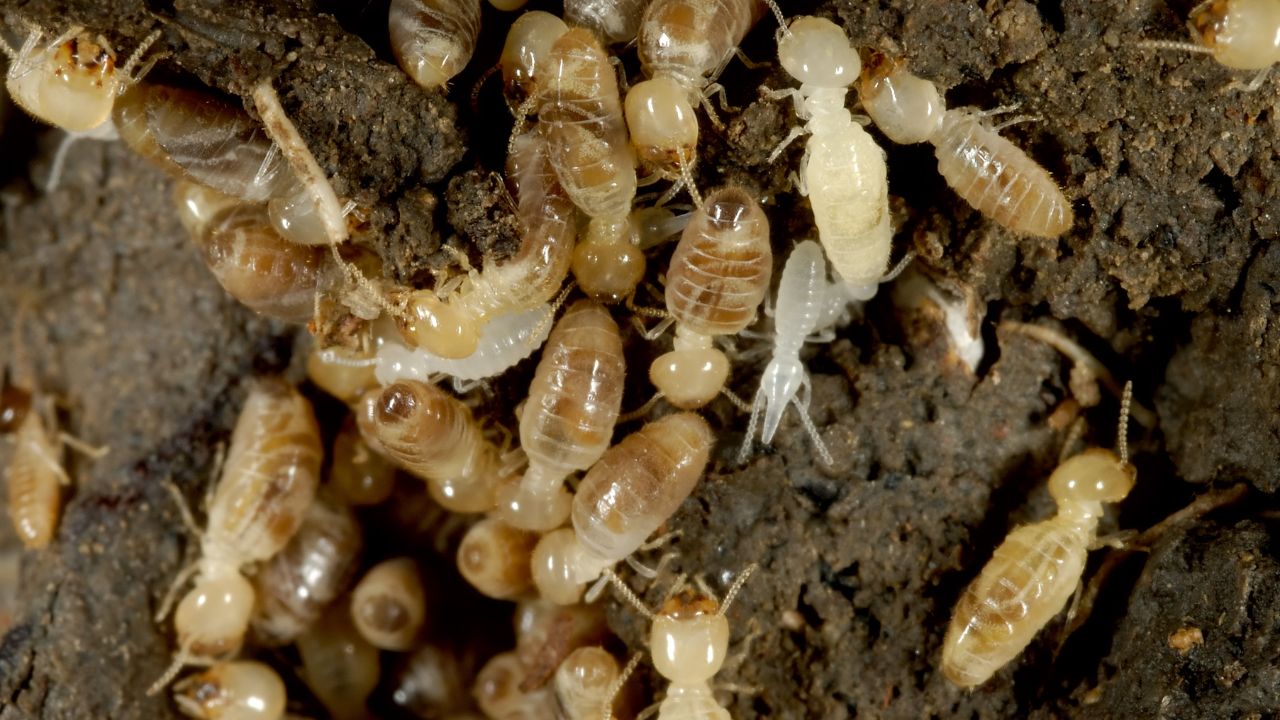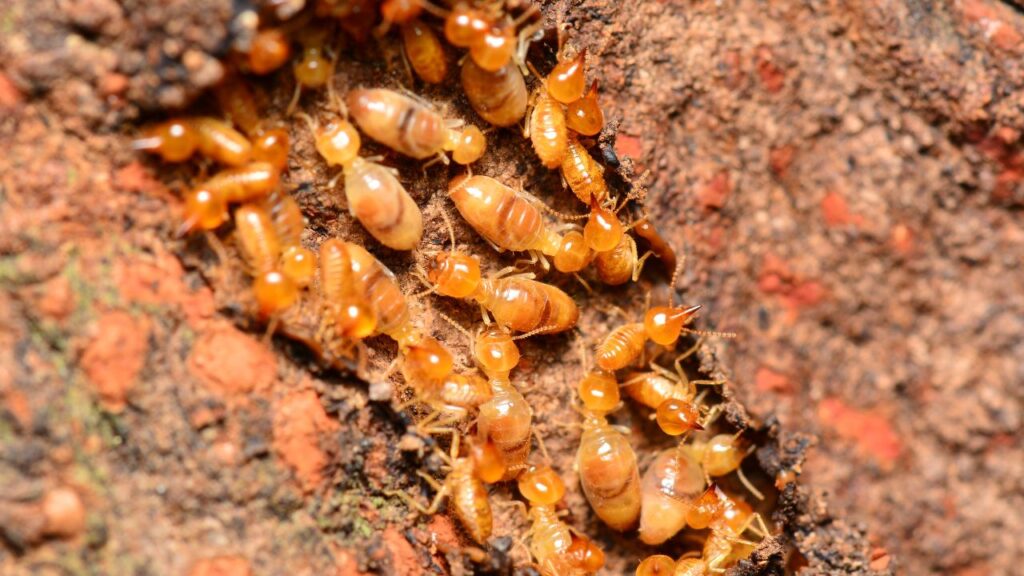Termites, known for their wood-consuming habits, play a significant role in ecosystems as decomposers. While these insects contribute to nutrient cycling and soil enrichment, there are numerous species that prey on termites. Understanding the dietary preferences of these predators provides valuable insight into the trophic levels and ecological balance present in different habitats.
Among the diverse range of termite predators are mammals, birds, reptiles, amphibians, and other insects. Certain predators demonstrate a specialized capacity for hunting and consuming termites, utilizing unique strategies and physical adaptations to capture and digest their prey. In some cases, termite consumption is a seasonal occurrence, while for others, it may constitute a major portion of their diet year-round.
This article will explore various animals that consume termites as part of their diet and discuss the distinct behavioral and physiological adaptations that enable these predators to locate and feed on these insects. By examining these relationships, a greater comprehension of the interconnectedness and dynamics of ecosystems can be achieved.
General Termite Diet
Cellulose-rich Materials
Termites are primarily attracted to cellulose-rich materials, which they can break down and digest using their specialized gut microbiota. These materials are commonly found in plant-based sources such as:
- Wood: Termites consume various types of wood, including both hardwood and softwood.
- Grasses: Some termite species feed on grasses, particularly those with high cellulose content.
- Leaves: Termites also target the fallen leaves of plants and trees, where they can extract the cellulose fibers.
- Paper products: Termites may infest and consume paper, cardboard, and other cellulose-based products occasionally.
Because termites play a crucial role in decomposition, they contribute significantly to nutrient cycling in ecosystems.
Decaying Wood
In addition to fresh wood, termites also consume decaying wood. This involves consuming fungi, which break down the wood and facilitate the decomposition process. The termite’s preference for decaying wood varies depending on the termite species. Some species, such as subterranean termites, gravitate towards decaying wood, while others, like drywood termites, prefer dryer and sound wood.
Decaying wood also provides termites with:
- Moisture: Termites require water to survive, and decaying wood retains more moisture compared to fresh wood.
- Additional nutrients: The presence of fungi and other microorganisms in decaying wood provides added nutrients and contributes to the termite’s diet.
- Shelter: Decaying wood offers termites a suitable living environment that protects them from predators and harsh weather conditions.
In summary, termites primarily consume cellulose-rich materials such as wood, grasses, and leaves, while also feeding on decaying wood. Their diet preferences vary depending on the species, and they play a vital role in decomposition and nutrient cycling within ecosystems.
Animals That Eat Termites
Termites are small insects that serve as an important food source for a variety of animals across different ecosystems. In this section, we will explore some animals that have termites as part of their diet.
Anteaters And Aardvarks
Anteaters and aardvarks are both known for their termite-eating habits. They share some similarities in physical adaptations that make them efficient termite consumers:
- Long snouts: This allows them to access termite mounds with ease.
- Sticky tongues: Their tongues are coated with a sticky substance, which enables them to catch termites swiftly.
Anteaters are native to Central and South America, where they feed primarily on ants and termites. The giant anteater is the largest species, consuming up to 30,000 termites per day.

Aardvarks are native to Africa and can consume up to 50,000 termites in a single night.
Birds
Various species of birds also prey on termites. Some of these include:
- Woodpeckers: Their strong beaks can excavate wood to locate and extract termite nests.
- Hornbills: Known for their large, curved bills, hornbills use their beaks to pick termites from mounds.
- Nighthawks: These nocturnal birds catch termites in mid-air during the termite’s swarming phase.

In summary, a diverse range of animals, including anteaters, aardvarks, and several bird species, rely on termites as an essential part of their diet. This demonstrates the intricate connections that exist within ecosystems and the dependence of various animal species on termite populations.
Role of Pest Predators
In Natural Ecosystem
Termites play a crucial role in the ecosystem, mainly by decomposing dead plant materials. However, they can also cause severe damage to human structures. In the natural ecosystem, various animals consume termites. These animals act as primary predators, controlling termite populations and preventing infestations. Some of these termite predators include:
- Ants: They are fierce competitors of termites and usually invade their nests to consume eggs, larvae, and adult termites.
- Birds: Specific bird species, such as woodpeckers and nuthatches, are known to feed on termites from rotting tree trunks or termite mounds.
- Reptiles: Various lizard species catch termites as part of their diet. In particular, geckos are termite predators which help in controlling infestations in the wild.
- Arthropods: Apart from ants, other arthropods like spiders and centipedes are known to consume termites.
In Pest Control
In pest control measures, researchers focus on promoting natural termite predators to reduce infestations in human structures. If properly managed and promoted, these predators can be an eco-friendly alternative to chemical treatments for termite control. Some biological pest control methods using termite predators include:
- Introduction of nematodes: Nematodes are microscopic worms that can enter termite bodies and release bacteria that eventually kill the termites. When introduced into termite-infested areas, nematodes can help reduce termite populations.
- Using parasitic wasps: Certain wasp species lay their eggs in termite nests. The wasp larvae feed on the termites, eventually causing the collapse of the colony. This technique can help control termite populations in specific areas.
- Encouraging ant populations: By promoting habitats for ants, such as removing insecticides, one can naturally suppress termites. However, be cautious, as ants may also become a nuisance and invade homes.
By understanding the role of termite predators in both natural ecosystems and pest control, it becomes apparent that promoting these predators can benefit a balanced environment and help manage termite infestations without relying solely on chemical solutions.

Body Systems Enabling Termite Consumption
Specialized Mouthparts
Some animals have evolved specialized mouthparts to efficiently consume termites. For instance, the anteater’s elongated snout and long, sticky tongue allow it to reach deep into termite mounds, while the aardvark uses its powerful claws and tubular snout to access termites in subterranean nests. Pangolins have long, curved claws that enable them to dig into termite mounds, and their long, sticky tongues allow them to gather termites quickly.
Digestive Adaptations
Animals that eat termites have also developed unique digestive adaptations to process their food. Termites are rich in cellulose, a complex carbohydrate that is difficult for many animals to digest. Some termite predators have evolved symbiotic relationships with microorganisms that help them break down cellulose in their digestive systems. For example:
- Anteaters possess a specialized stomach chamber, called the gastrum, which hosts a variety of microorganisms to break down cellulose from the termites they consume.
- Aardvarks have a muscular stomach, containing ingested soil that acts as a grinding mechanism to break down termite exoskeletons. The aardvark’s intestines have a high density of bacteria that further help digest the cellulose.
- Pangolins break down cellulose with the help of specialized bacteria that live in a section of their intestines called the caecum.
These adaptations enable termite predators to effectively extract nutrients from their termite diet, showcasing the diversity of body systems that have evolved to support termite consumption.
Other Sources of Termite Predation
Insects
Various insect species, such as ants, beetles, and flies, are known to prey on termites. Ants are among the primary predators, and some species have specialized in termite hunting. Army ants, for example, are known to raid termite colonies and consume large numbers of termites. They do so using their powerful jaws and ability to work collaboratively in large numbers.
Beetles also contribute to termite predation, particularly species of ground beetles and rove beetles. These beetles are predatory in nature and often invade termite colonies to consume both termite eggs and larvae.
Flies are another group of insects that feed on termites, particularly species of robber flies and dragonflies. Robber flies are predators that can capture and consume termites in mid-air, while dragonflies prey on winged termites during their nuptial flights.
Reptiles
Reptiles, such as lizards, snakes, and turtles, are known to consume termites in their natural habitat. The presence of termites serves as a crucial food source for these reptiles.
- Lizards: Various lizard species, especially geckos and skinks, actively hunt termites both on the ground and on trees. Lizards are opportunistic predators that rely on their quick reflexes and camouflage to capture termites.
- Snakes: Although not as common, certain snake species are known to feed on termites. These snakes, such as the termite snake, have adapted to this diet by having a smaller and narrower head, allowing them to access termite colonies more easily.
- Turtles: Some turtle species, such as the box turtle, include termites in their diet. These turtles possess strong jaws and beaks that enable them to crush termite exoskeletons, consuming them as a source of protein and nutrients.
Termites play a vital role in ecosystems as decomposers and as a food source for various animals. Many animals are known to eat termites, contributing to the balance of nature. Among them, anteaters, aardwolves, and pangolins are renowned termite-eaters, using their specialized adaptations to efficiently consume large numbers of termites.
In addition to these, insectivorous birds such as woodpeckers, martins, and swifts also seek out termite colonies for their diet. They consume termites in various stages of life, from eggs to adults.
Furthermore, several reptile and amphibian species like frogs, lizards, and geckos actively hunt and eat termites. These creatures provide essential pest control, reducing the termite population and minimizing their potential damage to wood.
Lastly, other smaller creatures like arachnids and insects are also known to prey on termites. Spiders, ants, and certain beetles use stealth and cunning to access termite colonies and devour their inhabitants.
In summary, a wide range of animals from different taxonomic groups rely on termites as a primary or supplementary food source. This reflects the importance of termites in both the food chain and the overall functioning of ecosystems.
Frequently Asked Questions
Which birds are known for eating termites?
There are several bird species that prey on termites. Woodpeckers, for instance, use their strong beaks to break into termite nests. Swallows and swifts are also known to consume termite swarms when they emerge during the mating season. Additionally, some species of antbirds and cuckoos can be observed feeding on termites in tropical areas.
What rainforest animals have termites in their diet?
In rainforests, various animals, including insects, birds, and mammals, eat termites. Anteaters, with their long snouts, are well adapted for consuming termites, using their sticky tongues to gather the insects. Some spider species, like the jumping spider, prey on termites, while several ant species will also consume termites during territorial battles.
Do reptiles, such as lizards, consume termites?
Reptiles, particularly lizards, are known to eat termites. For instance, geckos, which are insectivores, will prey on termites, while chameleons use their long, sticky tongues to catch termites in their environment. Skinks, various snakes, and monitor lizards may also include termites in their diet.
Which mammals feed on termites?
Apart from anteaters, other mammals known to eat termites include aardvarks, armadillos, and pangolins. Aardvarks have long, sticky tongues that help them to consume termites from their nests. Similarly, armadillos and pangolins use their strong claws to break into termite colonies and feast on the insects.
What are the main predators of termites in Africa?
In Africa, various animals include termites in their diet. Aardvarks and pangolins are among the main mammalian predators of termites. Other animals, like birds (e.g., woodpeckers and hornbills) and reptiles (e.g., lizards and snakes), also consume them. Additionally, termite-eating insects, such as antlions and predatory ants, are found in Africa’s diverse ecosystems.
How do North American animals incorporate termites into their diet?
In North America, many animals eat termites. Woodpeckers, nuthatches, and flycatchers are examples of birds that prey on termites. Among reptiles, various lizard species, like geckos and skinks, consume termites. Insect predators, such as ants and spiders, also feed on termites. Mammals, like armadillos, have been observed consuming termites in their diet as well.
Becky is a fervent wildlife enthusiast and pet care expert with a diploma in canine nutrition. Her love for animals stretches beyond the domestic, embracing the wild tapestry of global fauna. With over a decade of experience in animal welfare, Becky lends her expertise to OutlandishOwl through insightful articles, captivating wildlife information, and invaluable guidance on pet nutrition. Her work embodies a deep commitment to understanding the intricate lives of animals and a passion for educating others on sustaining natural habitats. Becky's hands-on conservation efforts and her knack for translating complex dietary science into practical pet feeding tips make her an indispensable voice for creatures great and small.




